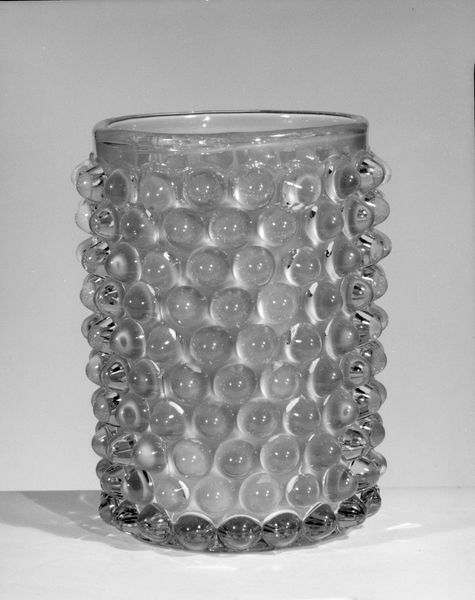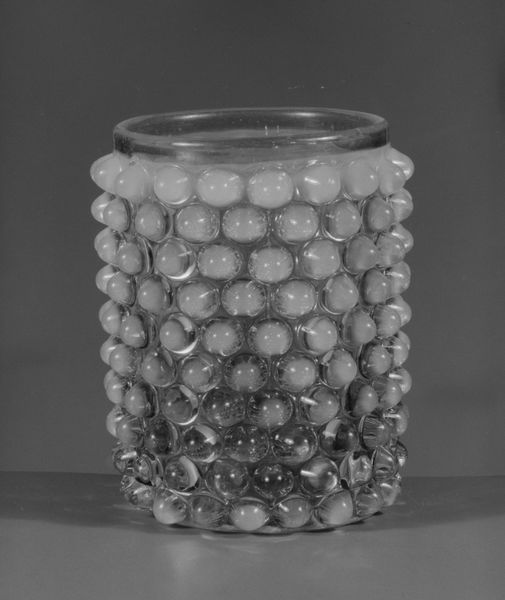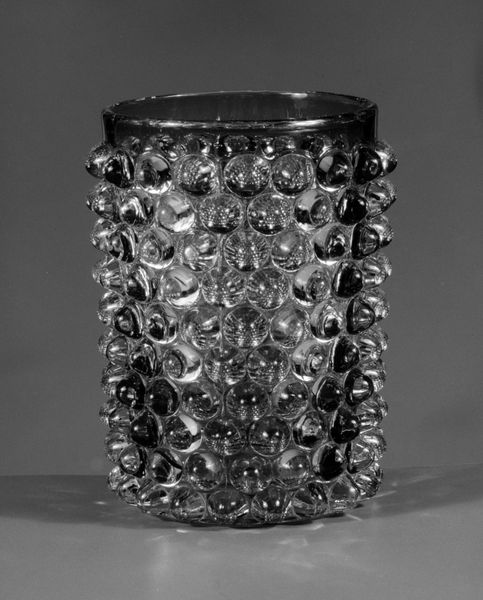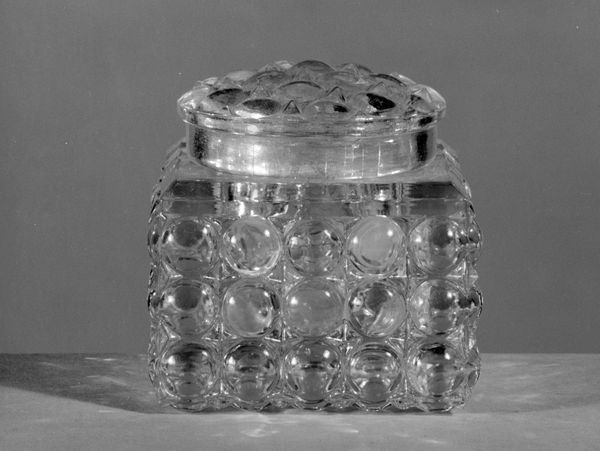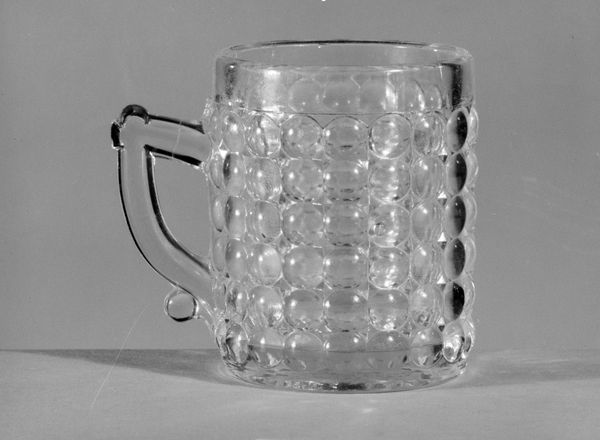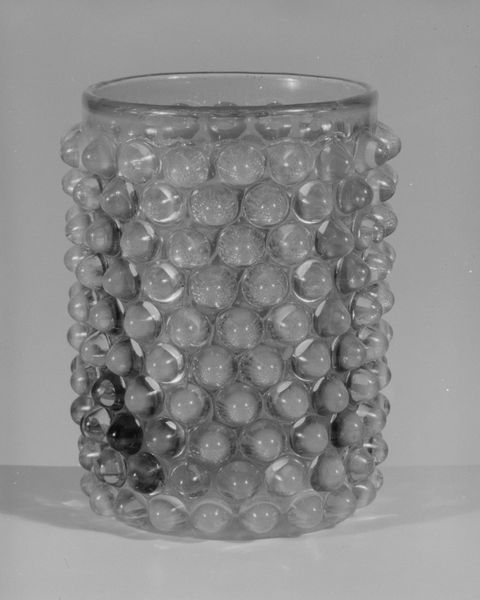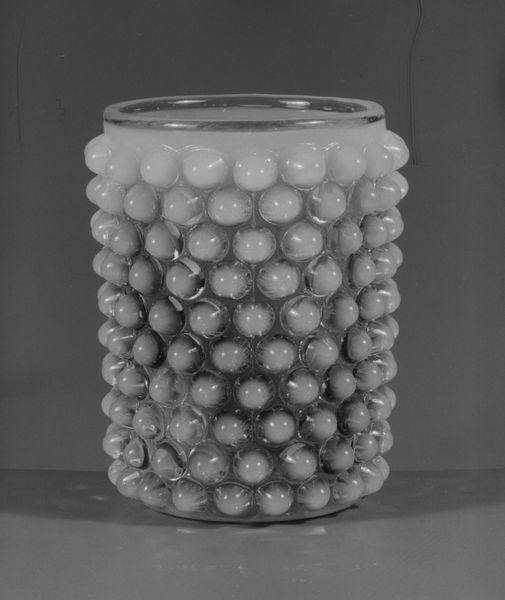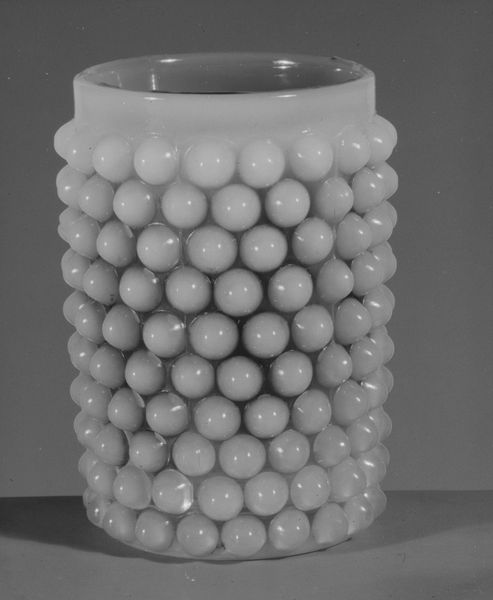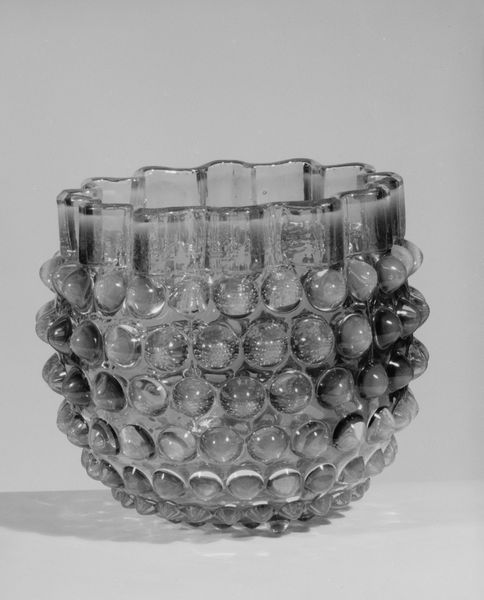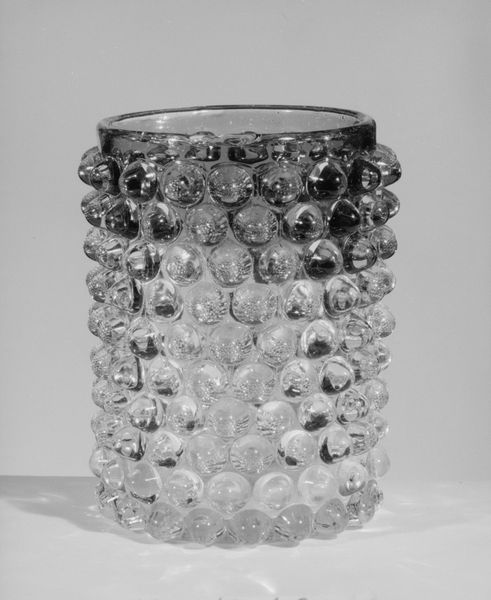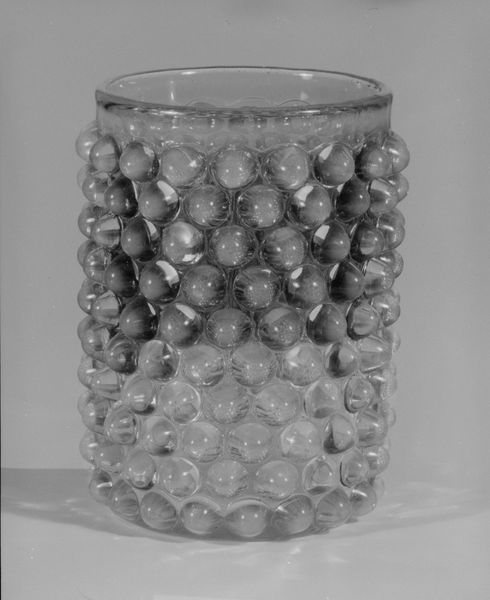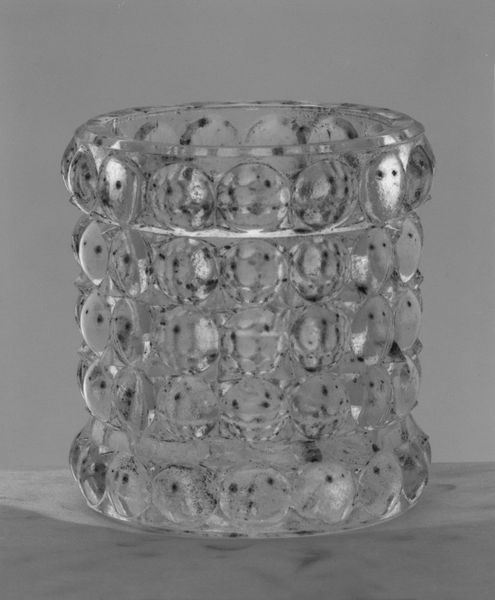
glass, sculpture
#
sculpture
#
glass
#
sculpture
#
united-states
Dimensions: H. 3 3/16 in. (8.1 cm)
Copyright: Public Domain
Editor: Here we have the “Salt Caster,” a glass sculpture crafted between 1885 and 1888 by Richards and Hartley Flint Glass Co. It has a captivating, almost bubbly texture. How do we contextualize such an object? Curator: It’s a fantastic example of the kind of decorative art that thrived in the late 19th century, coinciding with rapid industrial growth in the United States. Consider the social implications. Objects like this were often symbols of middle-class aspiration. Editor: A symbol of status? Like, "look how fancy my salt is?" Curator: Exactly! Mass production made objects like this relatively accessible, fueling the desire to showcase taste and refinement through household items. The Richards and Hartley Flint Glass Company contributed significantly to American glass production; this particular caster reflects an emerging culture of consumerism. Did glass pieces like this change dinner settings, for example? Editor: Definitely! Imagine moving from simple, utilitarian vessels to something with so much visual interest and light reflection. So this wasn’t just about holding salt, but signalling something larger about its owner and American social evolution at the time? Curator: Precisely. Its place in museum today encourages conversation on industrial progress, social climbing, and aesthetics in everyday lives during that period in the US. It reminds us that objects are powerful markers of historical trends. Editor: This gives me much to consider. Thanks for sharing your perspective; it definitely changes how I view everyday objects! Curator: My pleasure! Examining artwork as a reflection of social aspirations is invaluable.
Comments
No comments
Be the first to comment and join the conversation on the ultimate creative platform.
